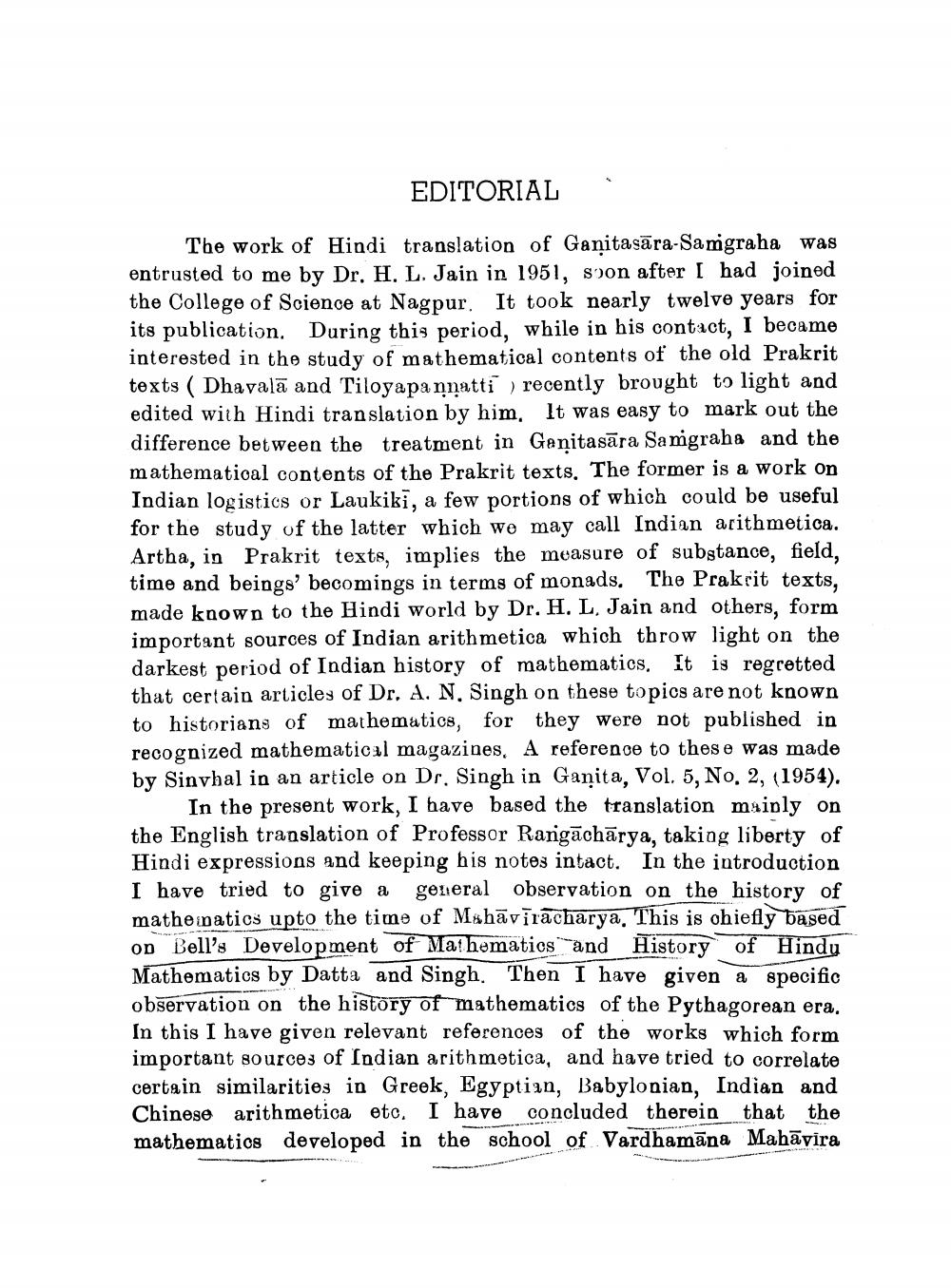________________
EDITORIAL
The work of Hindi translation of Ganitasara-Samgraha was entrusted to me by Dr. H. L. Jain in 1951, soon after I had joined the College of Science at Nagpur. It took nearly twelve years for its publication. During this period, while in his contact, I became interested in the study of mathematical contents of the old Prakrit texts (Dhavala and Tiloyapannatti) recently brought to light and edited with Hindi translation by him. It was easy to mark out the difference between the treatment in Ganitasara Samgraha and the mathematical contents of the Prakrit texts. The former is a work on Indian logistics or Laukiki, a few portions of which could be useful for the study of the latter which we may call Indian arithmetica. Artha, in Prakrit texts, implies the measure of substance, field, time and beings' becomings in terms of monads. The Prakrit texts, made known to the Hindi world by Dr. H. L. Jain and others, form important sources of Indian arithmetica which throw light on the darkest period of Indian history of mathematics. It is regretted that certain articles of Dr. A. N. Singh on these topics are not known to historians of mathematics, for they were not published in recognized mathematical magazines. A reference to these was made by Sinvhal in an article on Dr. Singh in Ganita, Vol. 5, No. 2, (1954). In the present work, I have based the translation mainly on the English translation of Professor Rangacharya, taking liberty of Hindi expressions and keeping his notes intact. In the introduction I have tried to give a general observation on the history of mathematics upto the time of Mahaviracharya, This is chiefly based on Bell's Development of Mathematics and History of Hindu Mathematics by Datta and Singh. Then I have given a specific observation on the history of mathematics of the Pythagorean era. In this I have given relevant references of the works which form important sources of Indian arithmetica, and have tried to correlate certain similarities in Greek, Egyptian, Babylonian, Indian and Chinese arithmetica etc. I have concluded therein that the mathematics developed in the school of Vardhamana Mahavira




